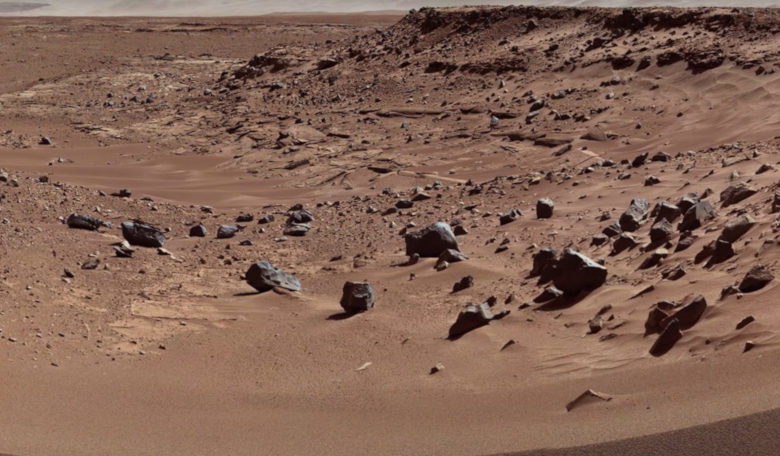New research by scientists at Brown University suggests that rocks in the Martian crust could produce the same kind of chemical energy that supports microbial life deep beneath Earth’s surface, meaning that these tiny microorganisms could be present on Mars right now.
Lurking deep underground in caves on our planet are colonies of sulphate-loving microbes that shun sunlight and instead feed off water found trapped in tiny holes in the rocks.
Before the microbes can “eat” the water, it first needs to be broken down into its constituent parts; hydrogen and oxygen.
To rip water molecules apart a chemical reaction with another element is needed and far below the Earth’s surface, sulphur is a key reactant.
This process is known as radiolysis and after the individual hydrogen and oxygen atoms in the water have been freed, microbes can ingest the dissolved hydrogen as fuel and use the oxygen to "burn" that fuel.
These "sulfate-reducing" microbes, which have never seen the light of day, can be found in places like Canada's Kidd Creek Mine, and they have been existing this way for more than a billion years.
Given this extreme way of living, it is not hard to imagine that the same type of processes could happening on other planets too. With that in mind, a team of researchers headed by Jesse Tarnas, a postdoctoral researcher at NASA's Jet Propulsion Laboratory, started analysing martian meteorites see if the ingredients for radiolysis-driven habitats could exist on Mars.
The study found that in several different types of Martian meteorites, all the ingredients, such as thorium, uranium and potassium and sulphide minerals that could be converted to sulfate, are present in adequate abundances to support Earth-like habitats.
Meteorites sourced from martian crustal rocks called regolith breccias that are more than 3.6 billion years old, were found to have the highest potential for life support say Tarnas and colleagues.
Better still, because Mars lacks a plate tectonics system that constantly recycle crustal rocks, like they do here on Earth, these ancient terrains remain largely undisturbed.
"The big implication here for subsurface exploration science is that wherever you have groundwater on Mars, there's a good chance that you have enough chemical energy to support subsurface microbial life," Tarnas said.
While Mars might look dry and arid on the surface, prior research has found evidence of an active groundwater system in the past, and there's reason to believe that groundwater exists today. And wherever there's groundwater, there's energy for life say the researchers.
“We don't know whether life ever got started beneath the surface of Mars, but if it did, we think there would be ample energy there to sustain it right up to today,” Tarnas added.
If microbial life is present, then scientists might not have to wait too far in the future to find out, as ambling across the barren martian surface as part of NASA’s long-term effort of robotic exploration of the Red Planet, is Perseverance, the agency’s fifth rover to take up residence on our planetary neighbour.
Percy is not only tasked with seeking signs of habitable conditions on Mars in the ancient past, but also with searching for signs of past microbial life itself. It will do this by collecting core samples of the most promising rocks and soils with its drill and setting them aside so that a future sample-return mission can send them back to Earth for further analysis.
But if Percy isn’t up to the task, recent advances in small drill probes could soon put the Martian subsurface depths within reach.
"The subsurface is one of the frontiers in Mars exploration," says Brown University professor Jack Mustard, co-leader of the study. "We've investigated the atmosphere, mapped the surface with different wavelengths of light and landed on the surface in half-a-dozen places, and that work continues to tell us so much about the planet's past. But if we want to think about the possibility of present-day life, the subsurface is absolutely going to be where the action is."











